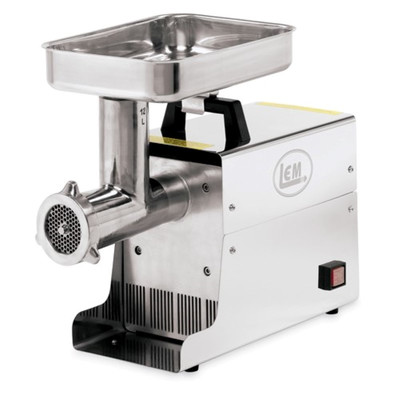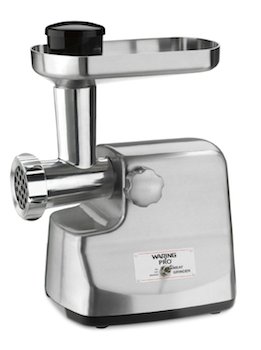Are you looking to have the best grounded meat for your burgers for next week party? Are you tired of buying grounded beef that never meets your expectations and always leave you disappointed? Well, it is already time you start learning how to grind your own meat at home.
Freshly ground meat for your burger patties next week. That sounds delicious. Not only it will be a good topic of conversation when people ask you where you got that amazing patties ( they won’t believe you did them yourself.
Many meat lovers and enthusiast love cutting, chopping and slicing their own meats. Sadly, most of them don’t know how to grind meat and just buy it already grinded not knowing that all that they need them probably already have it at home: a food processor.
Grinding you own meat doesn’t requires too much knowledge and it is fairly easy if you know what you have to do. If you are here you probably are pointed in the right direction.
You only need to know that there are 5 important things you MUST have in consideration to achieve the perfect ground meat with a food processor.
Meat-to-fat ratio is a big deal
Meat to fat ratio is actually a big deal, this will determine not only the quality of the grounded meat you’ll get, it will also affect the taste, texture, coarseness of the meat. It will all depend on what are you making for dinner.
For example you are looking to make juicy, soft flavorful burgers, then you might want to look for cuts with 75% meat and and 25% fat. Cuts like brisket, shank, short ribs, or well-marbled steak cuts are the best types of cuts for making these delicious burgers. A healthier yet tasty choice and the most common blend to find is 80/20 meat to fat ratio. If you are looking to make them extra healthier try the 90/10 ratio. You still can make 100% lean meat grounded meat but have in consideration that fat also has a purpose, it helps the meat cook better and in the case of burgers help them stay together and not fall apart when you are flipping them over the grill.
For recipes like sauces, fillings, stuffing’s and all those recipes that require the meat to cook as coarsely as possible, you should use the leaner cuts and keep your meat to ratio low to avoid excess grease in your food.
What are the best cuts?
If you want to make beef, pork or lamb, the most recommended cut is shoulder. Shoulder is normally the butchers choice for its case and there’s a reason for eat, the shoulder of the animals always contain perfect balance between fat inside and outside of the muscle which makes it really delicious and is perfect for grinding.
If you are going for turkey, chicken or other kinds of birds it is important to know that birds are extremely lean animals and that most of the fat can be found on the darker meat. Using the white meats or the leaner parts can make the cooked meat a bit chewy and very dry. The same is true for fish and other seafood’s, these are extremely lean meats. For burgers is best to use salmon or tuna they have enough fat to keep your patties together and prevent them from falling apart.
If you feel like the meat you have might be too lean, you can always ask the butcher for some fat cuts they have trimmed from any cuts of meat. This will not only help you achieve the perfect meat to ratio you need, will also add more flavors to your blend.
Let’s keep it cool
One of the most important things you have to know and may be the most important one to ground your meat correctly, is that you MUST let the meat cool in the freezer for some time before processing.
Cut the meat in in small cubes no larger than 1 inch, larger pieces might be harder to process and would take more time to grind which would result in over processed meat.
Chilling the meat in the freezer for about 30 to 45 minutes should be enough just cool it until the borders of the cuts are stiff enough but the center is still soft. Make sure you don’t completely freeze it or it will be too hard for the blades to cut resulting in broken blades or completely damaging your food processor.
The reason for chilling the meat in the freezer is that it so it much more easy to cut the meat for your food processor blades if the meat is hard but not too hard. The other reason to chill it is because the constant friction between the blades and the meat will generate some warm that will melt the fat in your blend.
A good trick is to put the blades and also the bowl in the freezer, it will help keeping the meat cold while processing reducing the heat produced from friction.
Another good practice is to never handle the meat with your hands, it will quickly warm send the fat will start to melt and will be harder for the blades to cut the meat if it’s just at room temperature
Don’t over grind!
One of the things you need to have in mind is that the texture of the meat you grind on food processors won’t look the same as the one you are used to. Instead of the strands you know, it will look like very coarsely chopped meat or like crumbles. Don’t try to achieve the traditional look on the food processor, over grinding could melt all the fat and make very tough meat.
The best thing you can do is forget about regular speeds of the grinder, use the pulse function to make sure that the meat is processed to the exact level of coarseness that you want.
Don’t over stuff
Always work small. Its highly recommended to never add more than half of the bowls capacity to ensure that everything gets processed in the least time as possible for preventing the meat to warm to much melting fat and making it harder to cut for the blades
Cleaning is of outmost importance
Cleaning your food processor is of vital importance to prevent the growth of potentially harmful bacteria.
Once you have finished using the food processor you need to clean it very well, remember that I was in contact with raw meat and that raw meat carry bacteria that if are not eliminated could contaminate all the element of your kitchen.
The best practices are to clean everything with hot water and soap. Scrub very well every inch, cracks, nooks or crannies, meat can easy dry and stick there which would make it harder for later removal.
You can also use disinfecting solutions to make sure there are no bacteria growing from any invisible bits of meat that might have already got too deep in to a cranny.
I don’t recommend putting anything in the dishwasher for two reasons.
Number one: cross contamination. The food processor just was in contact with raw meat, you don’t want to spread bacteria from the food processor to all you kitchen utensils and plates. So to be sure your food processor parts are perfectly cleaned and that bacteria wont spread clean it with hot water.
Number two: Dishwasher safe parts doesn’t mean they’re made for dishwashing. The blades can get dull very quickly if you constantly wash them on the dishwasher drastically reducing their lifespawn.


